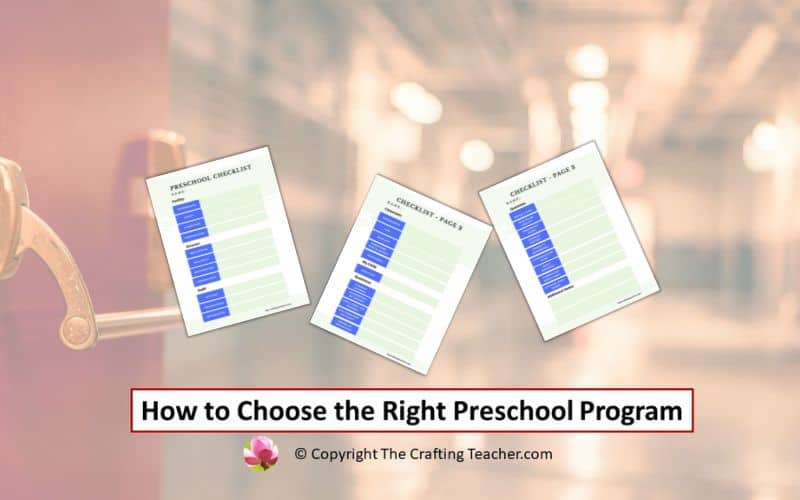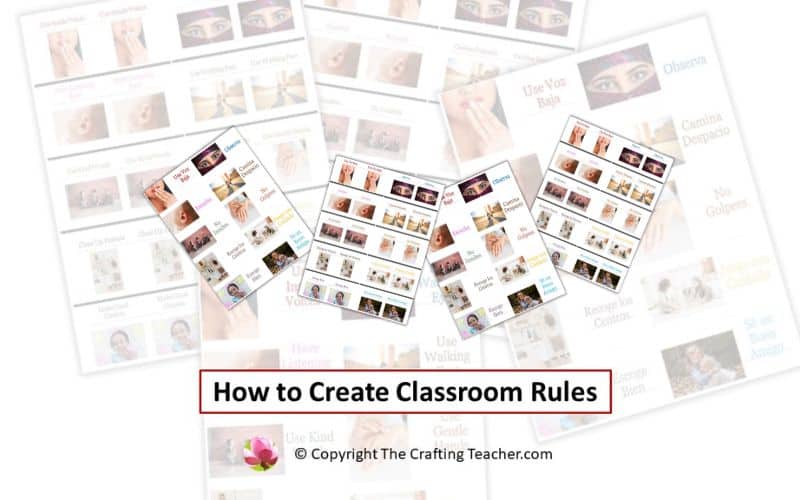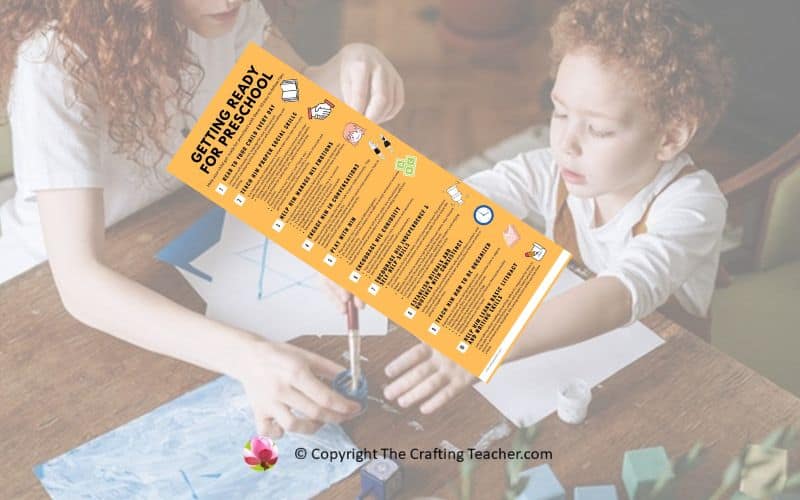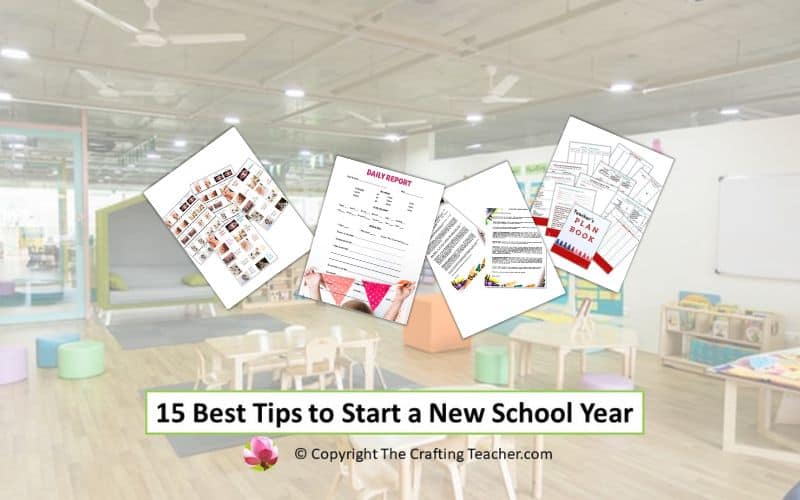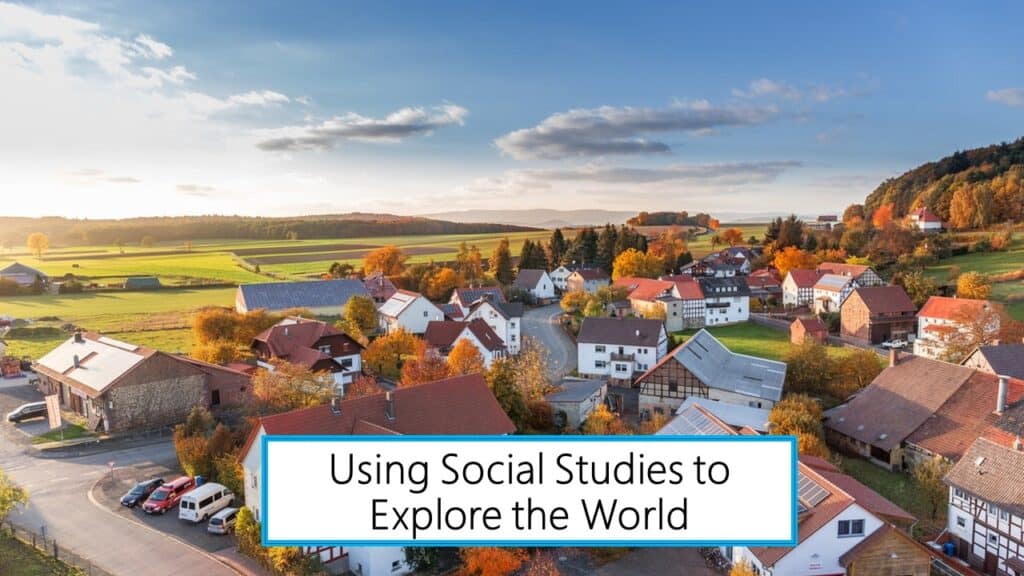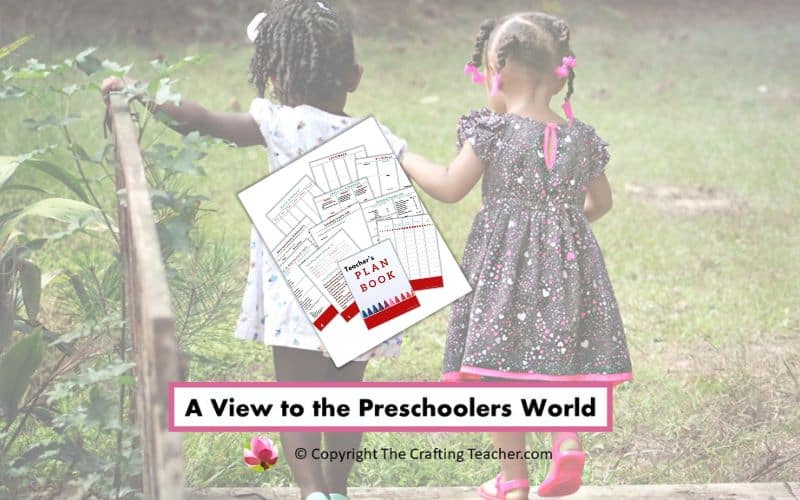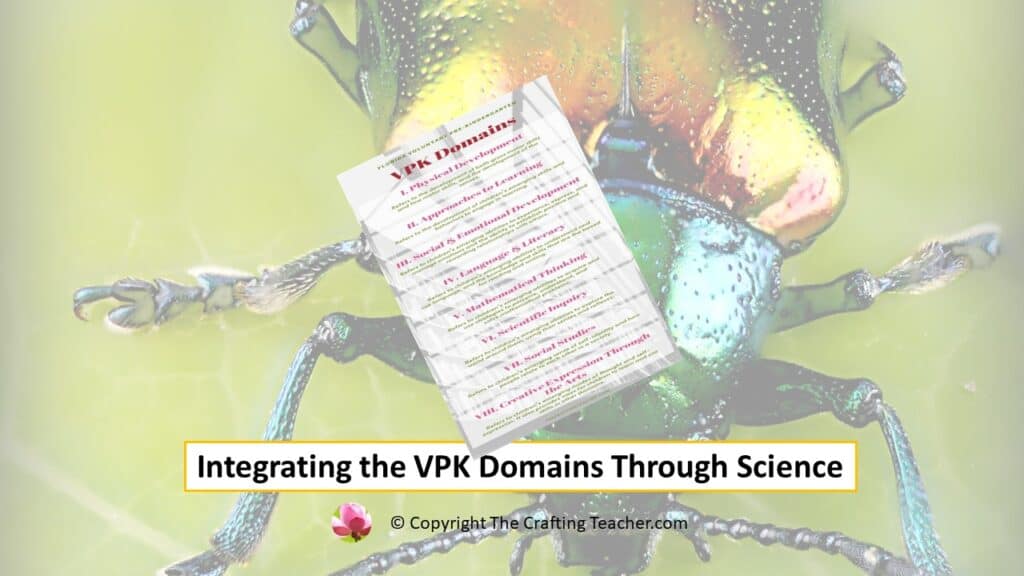Affiliate Disclosure: “This post contains affiliate links, which means I receive a small commission, at no extra cost to you, if you make a purchase using those links.”
How to Choose The Right Preschool Program
Best Tips To Take This Important Decision
Affiliate Disclosure: “This post contains affiliate links, which means I receive a small commission, at no extra cost to you, if you make a purchase using this link.”
Your child is growing up and it is time for you to choose a preschool program. It is a big step in both your lives and you might feel overwhelmed, scared, and worried because you don’t want to make a mistake in choosing the wrong school.
I get it! Taking the huge decision of sending your child to a preschool program could be very intimidating and confusing. Let us be real. Not all programs are created equal. There are a lot of exceptional preschool programs, and others are plain scary.
The selection is wide and varied. Every city and state offer a diverse variety of programs to choose from: some are private, some are government-funded for low-income families, some are free or low-cost in public schools and some are offered in charter schools secured by lottery, all of them with a variety of prices, schedules, curriculums, philosophies, and characteristics.
My Scary Experience
I remember when my youngest daughter was less than two years old. I had to face the difficult decision to put her in daycare. I asked my friend, and she recommended the program she was using. That was all I took into consideration and went for a tour. The center looked clean and well-equipped, and the director and staff were very nice, so I went ahead and enrolled her.
The first day I went to pick my daughter up I found a one-year-old going out through the front door by himself. Two second days after that I found her down on the floor on top of the carpet, eating her snack. at this point, I am already looking for another program. The following day I found her playing with a soiled diaper that was on her for so long, that I had to scrub her bottom super hard to be able to clean her, and she ended up with an almost super irritated bottom because it was already burned from the dirty diaper. That was the last day I step into that center.
Fortunately, selecting the right preschool for your child is not as difficult as it seems if you do your homework, know what to look for, and take an informed decision before you choose a program. I want to help you avoid making the same mistake I did by telling you what steps you have to take, to choose the right program for you and your child.
“An environmental-based education movement—at all levels of education—will help students realize that school isn’t supposed to be a polite form of incarceration but a portal to the wider world.” ~ Richard Louv
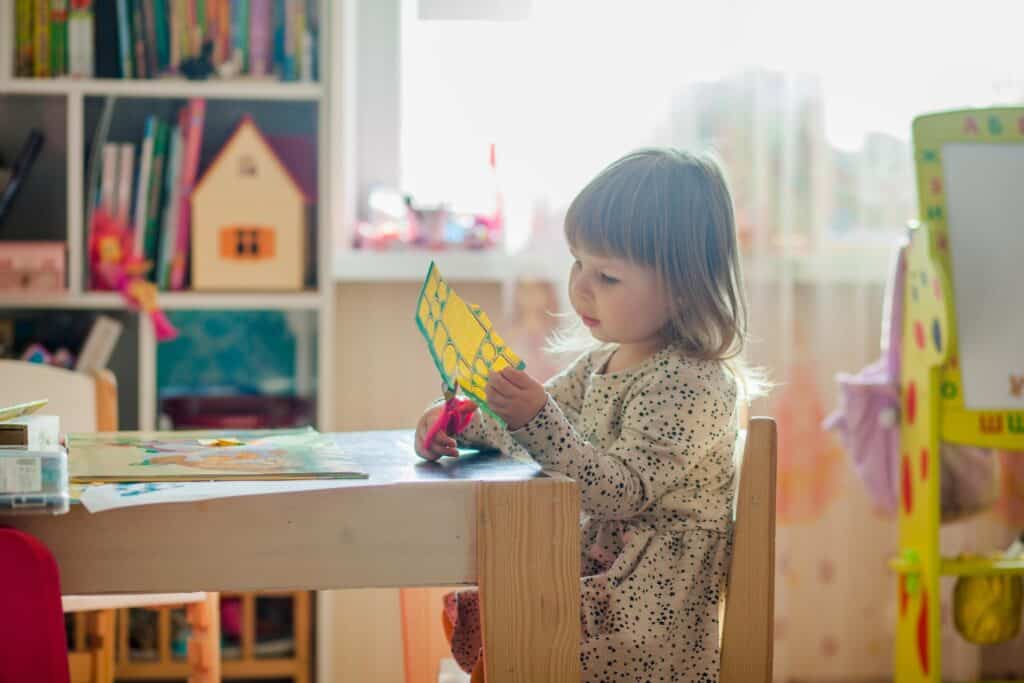
Tips for Choosing a Program
#1 – Decide what you can afford and need.
There is a wide variety of programs out there, and all of them offer different prices, hours of operation, and locations; therefore you have to consider several things you know where to look for a program, such as:
- How much you can afford to pay?
- What location is the most convenient for you, close to your house or your place of work?
- Which is the time frame you need your child to be cared for, morning, afternoon, or both?
#2 – Find out what type of philosophy you want
Another thing that can be very confusing to understand is you start hearing about different philosophies, ways of teaching, learning styles, and things like that. Since there are so many early learning programs available, you will want to understand the basic philosophies that underlie many of the preschools in your area and try to choose the one that you think will fit better your child’s personality and learning style.
Here are some of the more common types of preschool philosophies:
The Montessori school philosophy is based on the work of Maria Montessori, an Italian educator, where children are encouraged to take care of their own needs and belongings and help each other learn, with teachers specifically trained as their guides. Be aware that a school must have to be affiliated with the Association Montessori Internationale (AMI or AMI-USA) or the American Montessori Society (AMS) to be truly Montessori. Be careful to check the mission statement and curriculum of the Montessori school of your choice.
· Waldorf
Based on the ideas of the Austrian educator Rudolf Steiner, the Waldorf philosophy supports creative learning emphasizing the use of a schedule with a predictable rhythm, and the same group of students and teachers remain together for up to eight years, developing a good relationship. A school must be affiliated with the Association of Waldorf Schools of North America to use the Waldorf name, and teachers are specially trained.
The Reggio Emilia philosophy emphasizes the children’s artistry, letting them create projects that reflect their interests, with the teachers’ guidance. Children learn through their mistakes and everything is documented using their own words. I like this type very much because it encourages children to develop their creativity to their full potential, and it is amazing what they can accomplish. Sadly, there are not many programs with this type of philosophy.
High/Scope is a philosophy focused mainly on academic skill development. Children are encouraged to make independent decisions about materials and activities, with the teachers’ support. This type of philosophy is more appropriate for children who benefit from one-on-one attention, including special needs children.
Project-based philosophy considers children to be individual learners and the role of the teachers is to guide them through this process. Students and teachers work together to negotiate what children want to do, plan how they are going to do it, and work through projects, enhancing connections with the real world, using field trips, and different types of projects. This is a good program for children who work well in an unstructured environment.
· Religious
Offered by churches and religious schools, their philosophy and curriculum will vary according to which they choose, and they also incorporate religious content and/or training. What I don’t like about some of these programs is that, since they are religious-except, they might not use a good curriculum to follow, and that can hinder the development of a good learning process for the children.
· Community
The philosophy and curriculum of this type of school will vary according to what they choose, and they are run by local recreation parks, YMCA, or Jewish community centers. For me, these types of programs are based mainly on taking care of the children and keeping them busy. My personal experience is that programs with this type of philosophy don’t offer a good learning process for the children, academically speaking.
#3 – Research the centers available in your area
Once you decide on the area you want the preschool to be located in and the philosophy that will fit your and your child’s needs better, it is time for you to start researching which choices you can find in your area and eliminating the ones that don’t fit your criteria.
Two ways for you to do this are:
Navigate the internet
There is a huge preschool community network online that you can use to find out which preschools are good and which have “red flags” like complaints, citations, violations, or any other worrisome issue.
Please, be aware that you cannot believe EVERYTHING you read on the internet. You can be cognitive that there’s too much misinformation on the net, but there’s also great information out there if you know where to look.

Photo by Vlada Karpovich from Pexels
Some reliable websites you can use are:
- Child Care Licensing Office of your county
- The Early Learning Coalition of your county
- Child Care Aware Web site
- The National Association for the Education of Young Children (NAEYC) Web site
Ask everybody you know
Ask your friends, your neighbors, your family members, your pediatrician, etc. Find out if they have heard something about the preschools you are thinking about or what their personal experiences are with them. Ask them their opinion about the program’s philosophy, reputation, teaching staff, and curriculum.
Don’t feel bad or shy about asking about it. Remember that you have the right to know. Knowledge is power, and you need that to be able to make an informed decision before you enroll your child anywhere.
Once you have all this information, narrow down your options to two or three preschool centers before you take the next step.
#4 – Tour the facilities of your choice
This is maybe the most important step. You don’t know what is going on in a school until you go inside, see it with your own eyes and talk to the staff. Go in during class time unannounced and request a tour. If the school’s director tells you that you need an appointment, you might think about that preschool twice. A quality preschool should have opened door policy with staff who act the same way, whether there are visitors or not, and an appointment requirement from a school is a “red flag” in my book because it makes me think that they are hiding something.
Be prepared with questions to ask either in writing or in your mind. The director and staff should be able (and willing) to answer them, and if they hesitate or look insecure, take it as another “red flag”. Pay attention to your observations and their answers, to compile very important clues about the center and how it is run.
Some Things to Observe
1. The School Appearance
- Looks clean and smells good.
- Has no obvious safety hazards.
- Appears in good repair.
- The temperature is adequate.
2. The Director’s Approach
- She makes you and your child feel welcome.
- Is willing to answer all your questions.
- Seems well-documented and friendly.
3. The Staff’s Attitude
- Some staff members are yelling or screaming at a child.
- Teachers interact with the children, repeat their words, and comment on what they are saying.
- The staff answers children’s questions instead of ignoring them.
- Everybody has a smile on their face and seems friendly.
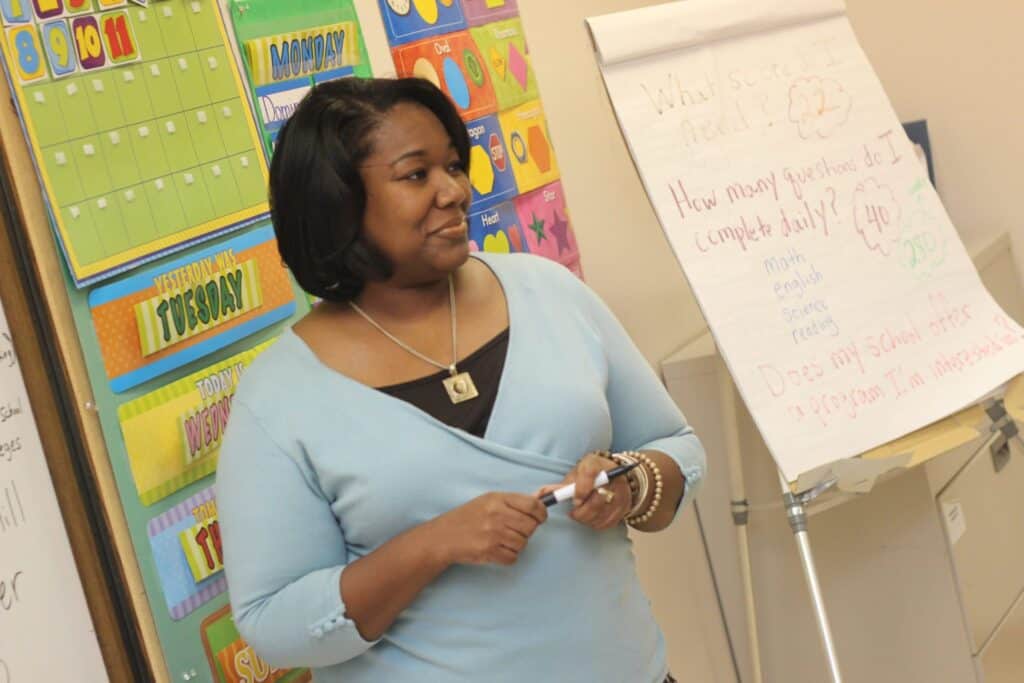
Photo by Nappy from Pexels
4. The Classroom Appearance
- It has an adequate size for the number of children enrolled.
- The furniture is child-size.
- Shelves and baskets have a lot of labels.
- Walls have printed words everywhere.
- It has a posted Parent Info board with the lesson plan, schedule, menu, etc.
- There are lots of children’s artwork, writing, building creations, and pictures displayed everywhere.
- The classroom looks organized, clean, and safe.
- There are a good amount of age-appropriate toys.
- It is divided into well-defined centers.
- Many books are available to children.
- It has a bathroom inside or close by for the children to use.
5. Your Child’s Reaction
- She looks interested.
- She wants to go to centers and play.
- She seems to relax talking to her potential teacher or looks scared.
Questions to Ask The Director
- Is the center licensed? Is the license current?
- Is the center accredited? With what organization?
- Are the teachers trained? Do they have a CDA or a higher credential, or just the basic 45 hours of training?
- Do they have a current CPR & First Aid certification?
- Is there a big teacher turnover or have they been here long?
- What are the hours of operation?
- Do you provide meals? What type?
- What is the discipline policy?
- What is the school’s emergency plan?
- What is the school’s teacher-student ratio?
- Do you provide a parent’s handbook?
- Do you communicate with the parents? How?
- Do the teachers give daily reports for the children to take home?
- Do you use a curriculum? Which one?
- Do they go outside? How many times a day?
Okay. I think that by now it is obvious what I think about a high-quality preschool center. I know you might feel overwhelmed, but you must consider all these points, to make an informed decision about which center is best for you and your child.
Use the free checklist found below to help you remember all these points and take notes, so you can review them after you leave the center, and be able to compare your notes with the notes to have taken from other facilities.
Last Thoughts
By now you have done your homework. You have asked around, researched online, visited the center, and taken all kinds of notes. Everything is going according to plan and you are ready to make a decision.
At the end of this process, the best and last piece of advice I can give you is to pay attention to what your gut is telling you. There is something special about the intuition that we parents have. It is like a sixth sense, an extra something that is rarely wrong. Follow it. It is probably telling you exactly what you need to hear before you enroll your child anywhere.
Also remember that you can always change your mind down the road, if something happens, you see or find out something that you do not agree with, simply take your child somewhere else. There is always another preschool to try.
I wish you luck on this new journey. I hope you and your child do great, and that it is going to be the best positive experience for both of you.
Be happy, safe, and creative. I wish you well.
Love,

P.S. When you finally choose a preschool and enroll your child, please let me know if my tips help you in any way and if there are any other tips you use. I would love to hear about your experience and to add those tips to my list.

